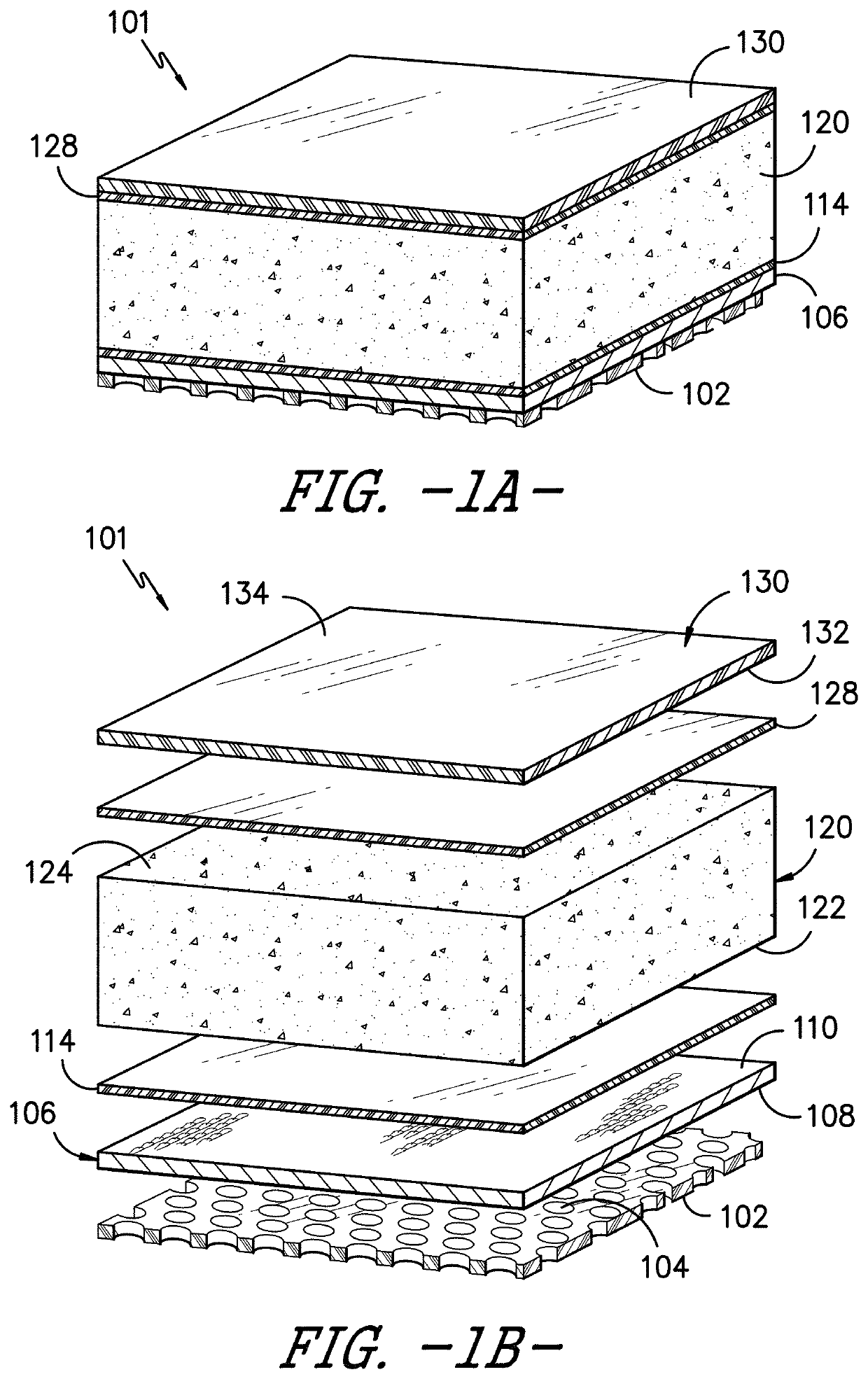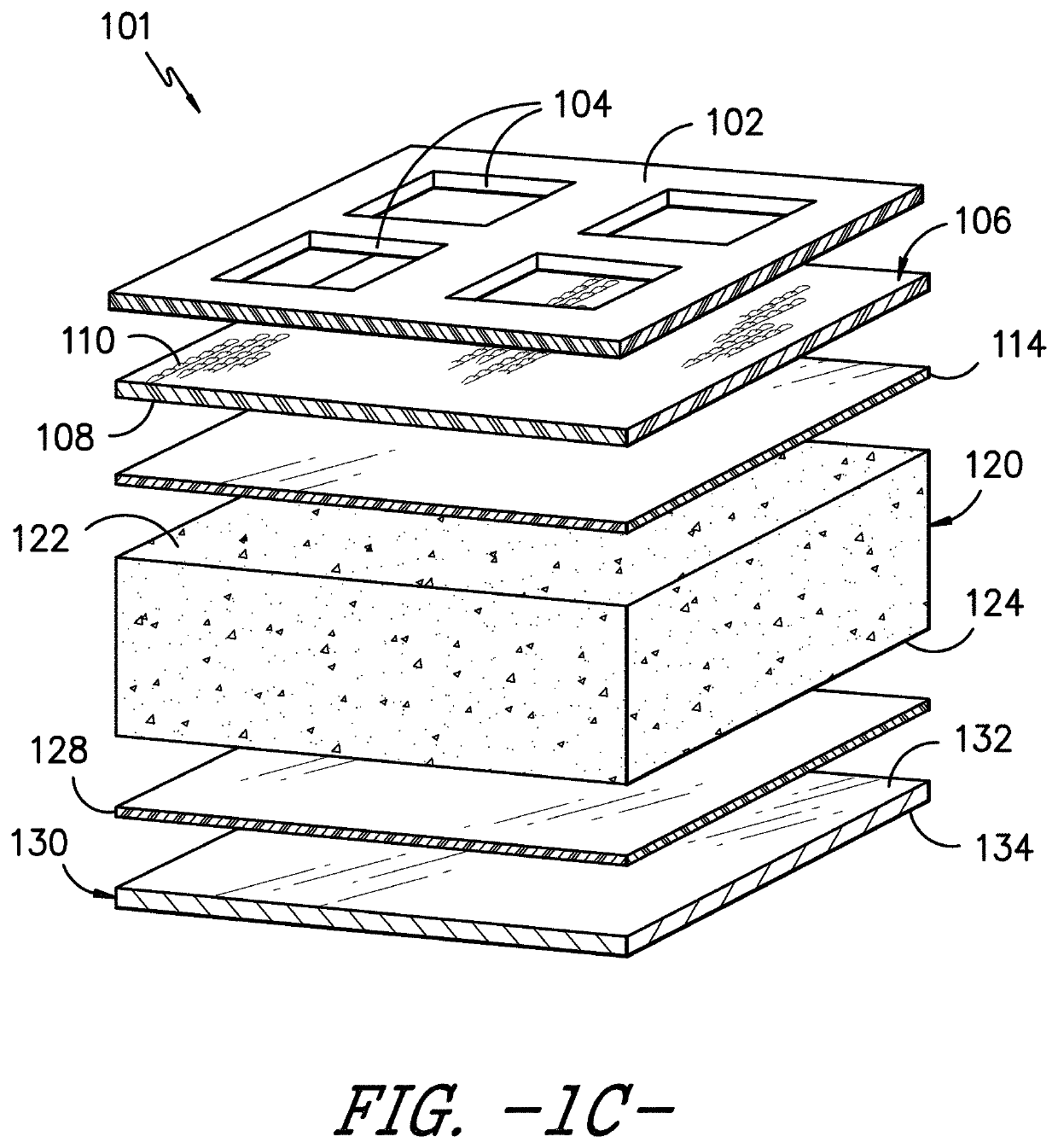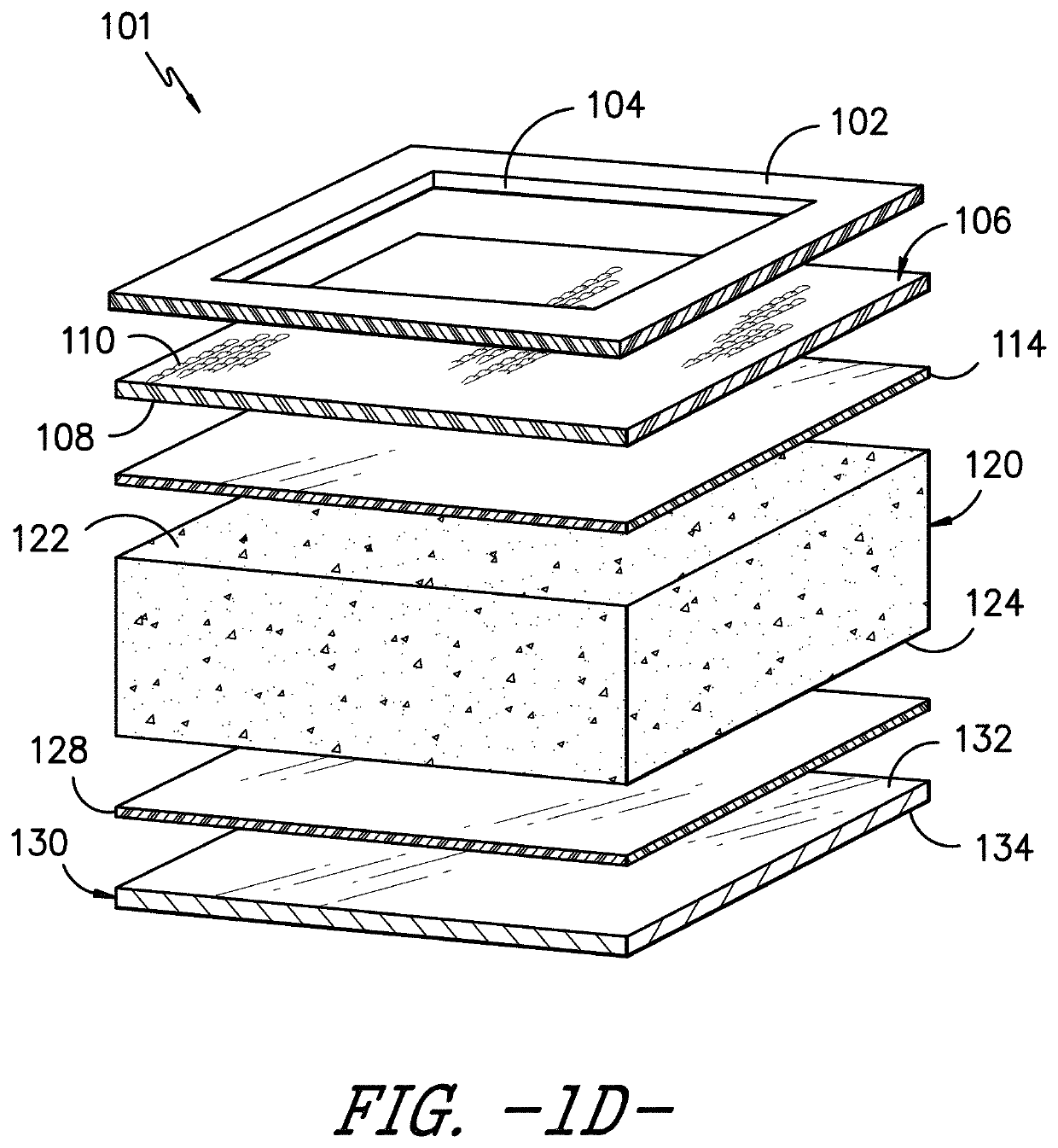Wound care device having fluid transfer and adhesive properties
a technology of fluid transfer and adhesive properties, applied in the field of wound care devices, can solve the problems of affecting the healing process,
- Summary
- Abstract
- Description
- Claims
- Application Information
AI Technical Summary
Benefits of technology
Problems solved by technology
Method used
Image
Examples
example 1
[0102]Example 1 was comprised of the following sequential layers: Silicone Gel Adhesive A, a jersey knit fabric (described previously, available from Milliken & Company of Spartanburg, S.C.), a hot melt adhesive (copolyamide, PA1008 / 1-060-014.25 available from SpunFab), a polyurethane foam (Medisponge® 60P available from Essentra), a hot melt adhesive (copolyamide, PA1008 / 1-060-014.25 available from SpunFab), and a polyurethane film (Inspire® 2340 available from Coveris). The Inspire® film was printed with logo and product identification. No silver antimicrobial was included.
[0103]A layer of hot melt adhesive was laid over the top of the jersey knit fabric. The fabric-hot melt composite was then fed into a laminating machine, along with all the additional layers in the correct order / configuration as outlined above. The machine was set at a temperature of 185° C. and a speed of 2.6 m / min. The laminate product was wound on a take-up roller.
example 2
[0104]Example 2 was the same as Example 1, except Silicone Gel Adhesive A was replaced with Silicone Gel Adhesive B.
modified example 2
[0105]Modified Example 2 was the same as Example 2, except individual fibers from the fluid transport layer were pulled through about 10% of the apertures in the silicone adhesive layer using tweezers.
PUM
| Property | Measurement | Unit |
|---|---|---|
| size | aaaaa | aaaaa |
| resistance | aaaaa | aaaaa |
| resistance | aaaaa | aaaaa |
Abstract
Description
Claims
Application Information
 Login to View More
Login to View More - R&D
- Intellectual Property
- Life Sciences
- Materials
- Tech Scout
- Unparalleled Data Quality
- Higher Quality Content
- 60% Fewer Hallucinations
Browse by: Latest US Patents, China's latest patents, Technical Efficacy Thesaurus, Application Domain, Technology Topic, Popular Technical Reports.
© 2025 PatSnap. All rights reserved.Legal|Privacy policy|Modern Slavery Act Transparency Statement|Sitemap|About US| Contact US: help@patsnap.com



